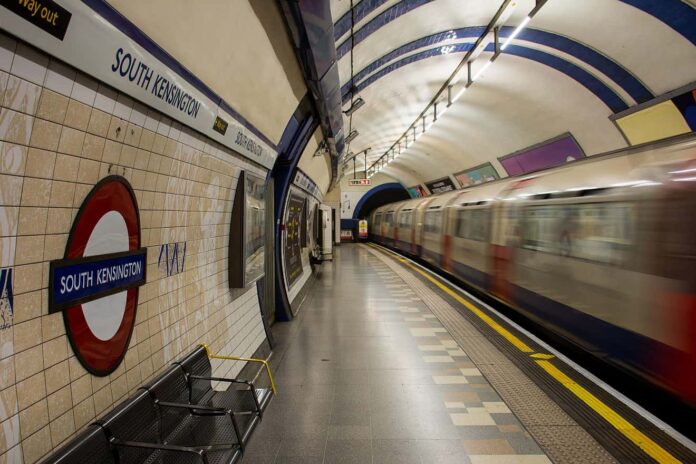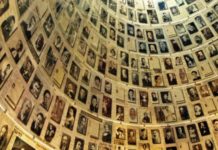
The estimated 1,500 kohanim who live in London cannot use the London Underground lines that stop at or run through South Kensington station, due to its proximity to the Science Museum. The museum has “4,351 human remains from many different countries and historical periods,” per its site, of which only a small number are on display.
Kohanim thus requested the addition of a “secondary roof” at the train station entrance, to create a physical separation from the museum, which would satisfy halachic requirements, permitting them to use the station without violating halacha.
However, the Chelsea and Kensington Council’s planning committee recently rejected the proposal, which reportedly would have cost several million pounds. (One million pounds is equivalent to roughly $1.23 million.)
The kohanim, who remain unable to use the Circle, District and Piccadilly lines, noted in a statement to the planning committee that they cannot “come in any shape or form in contact with a deceased (exceptions are made for immediate family), even not being under one roof.”
The proposed structure would have featured an inscription at eye-level reading: “A Kohen (a person of priestly lineage) is forbidden to allow himself to become contaminated with negative spiritual forces, such as those emanating from a corpse.”
Locals reportedly opposed the secondary roof as “inharmonious” design.
The Knightsbridge Association, a local voluntary association that aims to “preserve and enhance the character” of the area, expressed its disapproval, deeming the addition “incongruous” and “out of keeping with the listed aspects of the original entrance to the tunnel.”
Others expressed concerns about the archway potentially obstructing part of the public highway.
Council planners rejected the proposal based on concerns about the “size, design and position” of the proposed secondary roof, along with the perceived “irreparable harm” it could cause to the Grade II-listed building. The council concluded that the “public benefits would not outweigh the harm” posed by the alterations.
While the rejection addresses architectural and preservation concerns, it also underscores the delicate balance between religious accommodations and urban development, leaving room for ongoing discussions on how to navigate such situations.
Rabbi Yosef Dunner of the Union of Orthodox Hebrew Congregations proposed a concession, including removing the Hebrew script on the structure. Councilors still refused the plans.
Aaron Schimmel, a doctoral candidate in Jewish history at Stanford University, told JNS that the council’s decision to reject the plans amounts to “an expression of a more subtle antisemitism” at a time when anti-Jewish hate crimes of various stripes continue to spike across the world.
The Metropolitan Police covering London recent reported a 1,350% increase in recorded antisemitic offenses in the wake of Hamas’s Oct. 7 terror attack on Israel.
“Many view Jewish observance, including the restrictions observed by kohanim, as optional,” said Schimmel. “Being a kohen is both an honor and a responsibility, passed down in families from generation to generation.”
The commandment that kohanim avoid impurity “is not simply a meaningful ritual that kohanim benefit from spiritually,” he said. “It is a central and non-optional feature of their way of life.”
That the council dismissed the concerns of kohanim, “especially when the requested solution appears so simple and non-obtrusive, reads as a belittling dismissal of Jewish ritual, and an obstinate refusal to make an effort to help Jews, which contributes further to the current environment of antisemitism,” he said. JNS












Does ANYone’s Freedom of Religious Expression require EVERYone to pay for it? I don’t understand the request and understand even less their response to the answer they received.
Considering that each and every time a Kohain does not use the Underground, even in difficult circumstances, his Gan Eden in the world to come will be infinite multi times then if they put up this expensive structure.
Its probably a great deal for the kohanim.
The Rambam Hilchos Avelus 3:3, the Rama Y.D. 372:2 , the Shach Y.D. 372:4, the Yerayim all allow suggest that Tumas ohel can be limited to Jews… not everyone holds that its lechatchila, but there are dayos that can be relied upon. So its unfair to couch the story in such binary terms.
Why isn’t this problem applicable to Toronto’s subway line Museum stop where museum displays many human bones?
I think it’s a little presumptuous to call it anti-Semitism when somebody doesn’t want to spend several million dollars to put up an ugly second roof to accommodate 1500 potential passengers in a city of how many million?
I was at kever RMBHN this summer in stifling heat, and the kohanim area was locked. Was that also anti-Semitism?
Not antisemitism. We cannot expect a goyish government in galues to accomodate all of our religious needs and desires. Furthermore, there may be kulos that can be relied upon.
Wouldn’t it be cheaper to provide Kohanim with concrete shtreimels (sombrero style)
Ha ha ha. Gut gezuckt.